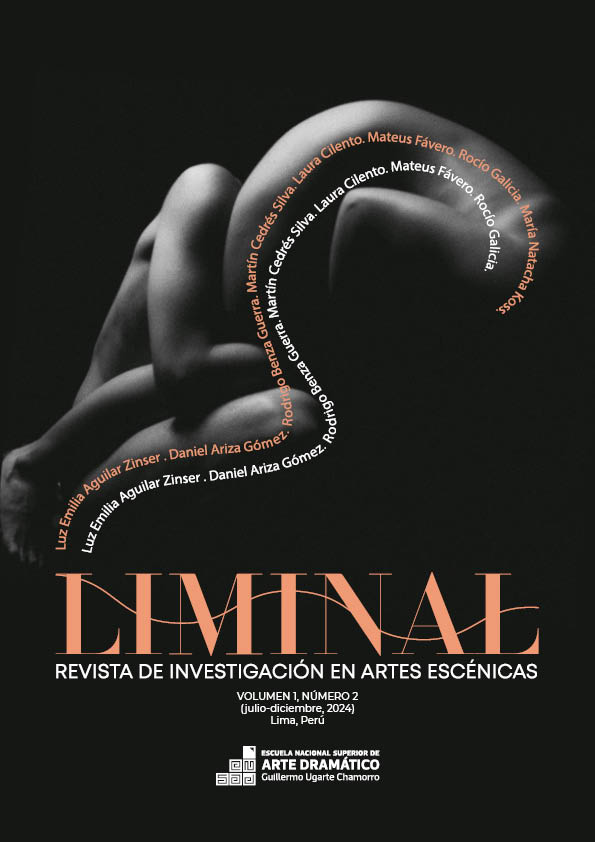Dichotomy
Being in the scene being in the scene. Differences, proximities and divergences
DOI:
https://doi.org/10.69746/liminal.a2Keywords:
Artistic representation, Contemporary theater, Interpretive artists, Performing arts, Post-dramatic theater, Presentation, Representation, Stage, Theatrical performancesAbstract
This text offers a critical-artistic reflection on a dichotomy that currently generates controversy in the theatrical field: representation–presentation. It is analyzed from a historical, poetic, and practical perspective. This search leads to highlighting how contemporary theater has challenged traditional conventions by actively involving the spectator in the performing process. This participation of the public as a 'participant' or 'witness' transforms the theatrical experience into a collaborative and co-creative event, where the barrier between actor and spectator is blurred. This approach not only redefines the relationship between the play and its audience, but also raises questions about the very nature of theater and its purpose in contemporary society.
Downloads
References
Araque, C., (2013), Dramaturgia en diferencia, Teatro Pos histórico, Editorial Universidad Distrital de Bogotá
Araque Osorio, C., Sarmiento Bonilla, M. F., Jiménez Gómez, C. A., & Contreras Camacho, C. A. (2019). Presentar-Representar. Cuatro perspectivas en El fallecido ojo de vidrio. Universidad Distrital Francisco José de Caldas.
Araque, C., & Contreras Camacho, C. (2023). ¿Representar, presentar o ninguna de los dos? Editorial Argus-a. E-book. https://argus-a.org/ebook/794-escritos-sobre-la-actuacion-contemporanea.html
Asociación de Academias de la Lengua Española, & Real Academia Española. (2018). Diccionario de la lengua española. http://dle.rae.es/?w=diccionario consultado el: 10 de enero de 2024.
Carvajal Montoya, M. (2015). El entrenamiento del actor en el siglo XX. Editorial Universidad de Antioquia.
Contreras Camacho, C. (2019). A direção teatral na América Latina: Narrativas da formação na universidade pública (Tesis de doctorado). Universidade Federal de Uberlândia. https://repositorio.ufu.br/handle/123456789/24492
Diéguez, I. (2014). Escenarios liminales. Editorial Paso de Gato.
Lehmann, H.-T. (2013). Teatro posdramático. Ediciones Cendeac.
Martínez, G. (2012). Apostillas: Memoria teatral. Fondo Editorial Universitario, EAFIT.
Minois, G. (2015). Historia de la risa y de la burla: De la Antigüedad a la Edad Media (J. Brash, Trad.). Ficticia.
Pavis, P. (1998). Diccionario del teatro. Ediciones Paidós.
Pavis, P. (2016). Diccionario de la performance y el teatro contemporáneo. Editorial Paso de Gato.
Rossi-Landi, F. (1976). Semiótica y estética. Nueva Visión.
Ruiz, B. (2012). El arte del actor en el siglo XX: Un recorrido teórico y práctico por las vanguardias. Artezblai.
Ryngaert, J., & Sermon, J. (2016). El personaje teatral contemporáneo: Descomposición y recomposición (p. 177). Editorial Paso de Gato.
Downloads
Published
How to Cite
Issue
Section
License
Copyright (c) 2024 Carlos Araque Osorio

This work is licensed under a Creative Commons Attribution 4.0 International License.













